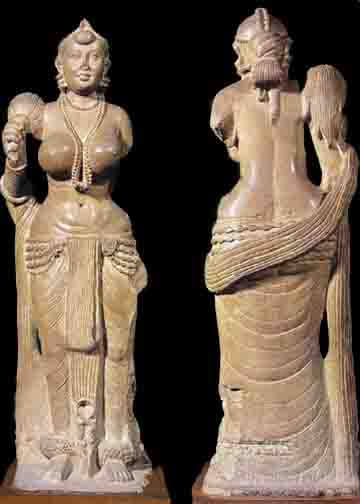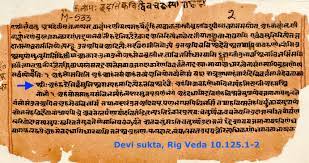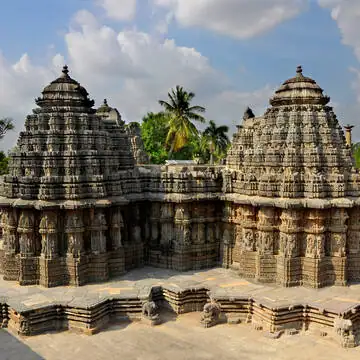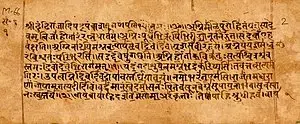The Sufi Movement in India: A Spiritual Legacy
The Sufi movement in India represents a unique and vital aspect of the country’s rich spiritual tapestry. Emerging in the medieval period, Sufism has played a fundamental role in shaping the cultural and religious landscape of the Indian subcontinent. It has transcended communal boundaries, fostering a spirit of tolerance and unity across diverse beliefs and practices. In this blog post, we will explore the history, teachings, key figures, and lasting impact of the Sufi movement in India.
Sufism is a mystical form of Islam that emphasizes the devotional aspect of prayer and the use of both words and silence. It has a long and varied history in India, and there are currently several Sufi orders active in the country. You will explore the traditional Islamic practice and a brief overview of Sufism and how it can help you connect with your innermost self.
Historical Background
Sufism, an esoteric dimension of Islam, arose in the early centuries of the Islamic faith, emphasizing personal experience and direct communion with God. While Sufism developed in the Middle East, it found fertile ground in India with the arrival of Muslim rulers and traders. By the 12th century, Sufi orders or ‘tariqas’ began establishing themselves in the Indian subcontinent, responding to the spiritual needs of the populace.
The Delhi Sultanate and later the Mughal Empire saw the flourishing of Sufism, as Sufi saints became prominent figures in society. They served not only as spiritual guides but also as social reformers, addressing the socio-political challenges of their times. This period marked the synthesis of Islamic mysticism with local traditions, making Sufism relatable and accessible to the diverse Indian populace.
What is Sufism?
Sufism is a term used to refer to mystical religious ideas in Islam. It had evolved into a well-developed movement by the 11th century.
- Sufis stress the importance of traversing the path of the Sufi pir, enabling one to establish a direct communion with the divine.
- Fundamental to Sufism is God, man and the relation between them, which is Love.
- The Sufis were regarded as people who kept their hearts pure.
- The murid (disciple) passes through maqamat (various stages) in this process of experiencing communication with the divine.
- The Khanqah (the hospice) was the centre of activities of the various Sufi orders. The khanqah was led by a shaikh, pir or murshid (teacher) who lived with his murids (disciples).
- By the twelfth century, the Sufis were organised in silsilahs (orders). The word silsilah meant chain, signifying an unbreakable chain between the pir and the murid.
- With the death of the pir, his tomb or shrine, the dargah became a centre for his disciples and followers.
- In the 10th century, Sufism spread across important regions of the Islamic empire. Iran, Khurasan, Transoxiana, Egypt, Syria and Baghdad were important Sufi centres.
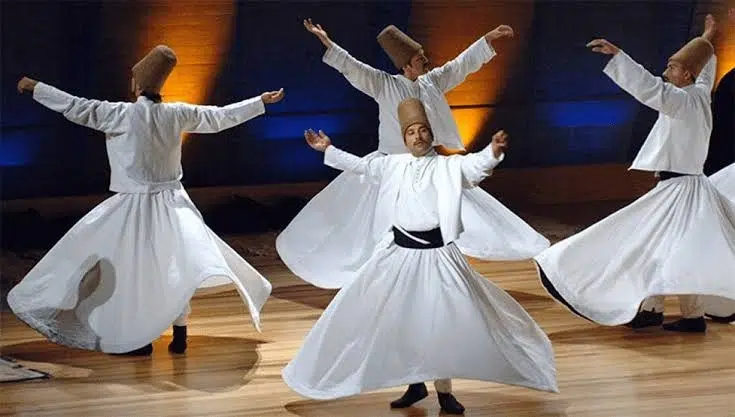
Features of the Sufi Movement in India
The Sufi movement in India commenced in the 11th century A.D. The Sufi movement, as it emerged in India, the Sufi movement had the following features:
- The Sufis were organized in a number of different silsilahs (orders).
- Most of these orders were led by some prominent Sufi saint or pir. It was named after them and was followed by his disciples.
- The Sufis believed that for union with God, one needs a spiritual guru or Pir.
- The Sufi pirs lived in Khanqahs with their disciples
- The Khanqah (the hospice) was the centre of Sufi activities
- The Khanqahs emerged as important centres of learning which were different from madrasas, the centres of theology
- Many Sufis enjoyed the musical congregation or sama in their Khanqahs. A musical form called the qawwali developed during this period.
- The ziyarat, or pilgrimage to the tombs of the Sufi saints, soon emerged as an important form of ritual pilgrimage.
- Most of the Sufis believed in the performance of miracles. Almost all pirs were associated with the miracles performed by them.
- The different Sufi orders had diverse approaches to the matters of polity and state.
Teachings of Sufism
Sufi teachings are founded on principles of love, devotion, and the quest for truth. Central to Sufism is the idea of the ‘beloved’ – a metaphor for God – and the deep yearning one feels to unite with the divine. Key concepts in Sufi philosophy include:
1. Tariqah (Path):
Sufism emphasizes the importance of the spiritual path towards enlightenment. This path requires discipline, meditation, and the guidance of a spiritual teacher or ‘pir’.
2. Ishq (Love):
Love is a central theme in Sufi discourse. Sufis view love as a transformative force that connects the seeker with the divine. This love transcends traditional boundaries and promotes a universal brotherhood.
3. Zikr (Remembrance):
The practice of remembrance of God, or ‘zikr’, is fundamental in Sufi rituals. It involves chanting and recitation, often leading to a state of spiritual ecstasy and deeper insight.
4. Sama (Listening):
Sama, or the act of listening to music and poetry, is another important aspect of Sufi practice. Many Sufis believe that music can transport the soul closer to God.
5. Unity of Being:
A profound teaching of many Sufi thinkers, particularly Ibn Arabi, is the concept of the ‘Unity of Being’ or ‘Wahdat al-Wujud’. It posits that all existence is interconnected and emanates from the divine essence.
Prominent Sufi Orders in India
Several Sufi orders have played a significant role in the Indian Sufi movement. Below are a few of the most notable:
1. Chishti Order:
Founded by Khwaja Moinuddin Chishti in the 12th century, the Chishti order is one of the most influential Sufi orders in India. Its headquarters in Ajmer remains a pilgrimage site for millions of devotees. The Chishti order is known for its emphasis on love, tolerance, and humanitarian values.
The Chishti order was founded in a village called Khwaja Chishti (near Herat). In India, the Chishti silsilah was founded by Khwaja Muinuddin Chishti (born in 1142 AD), who came to India around 1192 (after the invasion of Muhammad Ghori). He made Ajmer the main centre for his teaching.
- The fame of Khwaja Muinuddin grew after he died in 1235; his grave was visited by Muhammad Tughlaq, after which Mahmud Khalji of Malwa erected the mosque and dome in the fifteenth century.
- The patronage of this dargah peaked after the reign of the Mughal emperor Akbar.
- The Chishtis believed in the following:
- Love as the bond between God and the individual soul,
- The tolerance between people of different faiths,
- Acceptance of disciples, irrespective of their religious beliefs,
- The attitude of benevolence to all,
- Association with Hindu and Jain yogis, and
- Use of simple language.
2. Qadri Order:
The Qadri order was established by Sheikh Abdul Qadir Jilani in the 11th century but found prominence in India later. The order focuses on jurisprudence alongside spirituality and has numerous followers across the subcontinent.
The Quadiriyya silsilah was popular in Punjab.
- Sheikh Abdul Qadir and his sons were supporters of the Mughals under Akbar.
- The pirs of this Order supported the concept of Wahdat al Wajud (unity of existence).
- Among the famous Sufis of this order was Miyan Mir, who had enrolled the Mughal princess Jahanara and her brother Dara as disciples. The influence of the sheikh’s teachings is evident in the works of the prince.
- Shah Badakhshani, another pir of this silsilah, while dismissing orthodox elements, declared that the infidel who had perceived reality and recognised it was a believer and that a believer who did not recognise reality was an infidel.
3. Naqshbandi Order:
The Naqshbandi order, originating in Central Asia, has had a profound impact on Indian Sufism. Renowned for its teachings on silent meditation and remembrance, it has cultivated a large following in India, particularly among the Muslim elite.
In India, this order was established by Khwaja Bahauddin Naqshbandi. From the beginning, this Order’s mystics stressed the Shariat’s observance and denounced all innovations or biddat.
- Sheikh Baqi Billah, the successor to Khawaja Bahauddin Naqshbandi, settled near Delhi. His successor Shaikh Ahmad Sirhindi attempted to purge Islam from all liberal and what he believed were ‘un-Islamic’ practices.
- He opposed the listening of sama (religious music) and the practice of pilgrimage to the tombs of saints.
- He opposed interaction with Hindus and Shias. He criticised the new status accorded by Akbar to many non-Muslims, the withdrawal of the Jizyah and the ban on cow slaughter.
- He believed that he was the mujaddid (renewer) of the first millennium of Islam.
- He maintained that the relationship between man and God was between the slave and the master and not the relation of a lover and beloved.
- He emphasised the individual’s unique relation of faith and responsibility to God as a creator.
- He tried to harmonise the doctrines of mysticism and the teachings of orthodox Islam.
4. Suhrawardi Order:
Suhrawardi Silsilah was founded by Shihabuddin Suhrawardi in Baghdad. It was established in India by Sheikh Bahauddin Zakariya.
- Sheikh Bahauddin Zakariya set up a leading khanqah in Multan, controlled by Qubacha and visited by rulers, high government officials and wealthy merchants.
- He openly took Iltutmisht’s side in his struggle against Qabacha and received from him the title of Shaikhul Islam (Leader of Islam).
- It must be noted that, unlike the Chishti saints,
- the Suhrawardis maintained close contact with the state.
- They believed that a Sufi should possess the three attributes of property, knowledge and hal or mystical enlightenment.
- Bahauddin Zakariya stressed the observance of external forms of religious belief and advocated a combination of ilm (scholarship) and mysticism.
- Practices like bowing before the sheikh, presenting water to visitors and tonsuring the head at the initiation into the Order that the Chishtis had adopted were rejected.
- They accepted gifts, jagirs and even government posts in the ecclesiastical department.
- The Suhrawardi silsilah was firmly established in Punjab and Sind.
The Firdausi order
- The Firdausi order was a branch of the Suhrawardi that established itself at Raigir in Bihar towards the end of the 14th century.
- Shaikh Badruddin Samarqandi was the founder of this order.
- The most prominent sufi belonging to this silsilah in India was Shaikh Sharfuddin Yahya Maneri.
Key Figures of the Sufi Movement in India
The Sufi movement has produced numerous luminaries whose teachings and legacies continue to inspire generations. Here are a few key figures:
1. Khwaja Moinuddin Chishti:
Perhaps the most revered Sufi saint in India, Khwaja Moinuddin Chishti established the Chishti order. His teachings emphasized the importance of love and compassion towards all beings. His tomb in Ajmer is a major pilgrimage site.
The fame of Khwaja Moinuddin grew after he died in 1235; his grave was visited by Muhammad Tughlaq, after which Mahmud Khalji of Malwa erected the mosque and dome in the fifteenth century.
- Sheikh Hamiduddin of Nagaur and Qutubuddin Bakhtiyar Kaki were the disciples of Khwaja Muinuddin Chishti. Qutbuddin Bakhtiyar Kaki established the Chishti presence in Delhi. Sultan Iltutmish dedicated the Qutub Minar to this Saint.
- The Chishti pirs emphasised the simplicity of life, poverty, humility and selfless devotion to God. They regarded the renunciation of worldly possessions as necessary for the control of the senses necessary to maintain a spiritual life.
- Sheikh Fariduddin (Baba Farid) of Ajodhan (Pattan in Pakistan) popularised the Chishti silsilah in modern Haryana and Punjab. He opened his door of love and generosity to all. His verses written in Punjabi are quoted in the Adi Granth.
2. Nizamuddin Auliya:
Baba Farid’s most famous disciple Shaikh Nizamuddin Auliya (1238-1325) was responsible for making Delhi an important centre of the Chishti silsilah. Nizamuddin Auliya is celebrated for his profound spirituality and poetic contributions. His teachings focused on universal love and service to humanity. The famous Sufi poet Amir Khusro, who was his devotee, is known for his literary works that blend Persian and Indian themes.
- He came to Delhi in 1259, and during his sixty years in Delhi, he saw the reign of seven sultans.
- He preferred to shun the company of rulers and nobles and kept aloof from the state.
- For him, renunciation meant the distribution of food and clothes to the poor.
- Amongst his followers was the noted writer Amir Khusrau.
3. Baba Farid
- Baba Farid popularised the Chishti silsilah in modern Haryana and Punjab.
- He is recognized as the first major poet of the Punjabi Language.
- Some parts of Baba Farid’s poems have been included in the Guru Granth Sahib.
4. Sheikh Sarfudin Yahya
- He popularized the Firdausi order in India.
- The Firdausi order is virtually a branch of Suhrawardi Silsila.
Beliefs Of Sufi Saints
The beliefs of prominent Sufis and medieval mystic saints are discussed below:
- They advocated strongly liberal ideas and free thought among the followers, unlike the fundamental beliefs.
- They were against formal worship and condemned rigidity and fanaticism in religion in the name of God, which occurred in Islam during the medieval period.
- Similar to the Bhakti Saints in India, Sufi Saints also adopted the way of meditation to achieve spiritual attainment.
- Like the prominent Bhakti saints of the 10th century CE, Sufi saints also interpreted religion as a ‘love of god’ and service of humanity.
- They gave more priority to devotion rather than prayers.
- They believed in the teachings of Prophet Mohammed, gave importance to their ‘Murshid’ or ‘Pir’ (Guru), and practiced the Guru-Shishya theory.
Impact of the Sufi Movement on Indian Society
The Sufi movement has had a transformative impact on Indian society in various aspects:
1. Interfaith Harmony:
Sufism’s inclusive nature promotes dialogue among different faiths. Sufi shrines often attract followers from various religious backgrounds, fostering unity and resilience in the face of sectarian divides.
2. Cultural Syncretism:
The infusion of Sufi thought into Indian culture has led to a rich amalgamation of music, poetry, and art. The ghazal and qawwali, musical forms associated with Sufism, are cherished across communities.
3. Social Reforms:
Many Sufi saints championed social justice and equality. Their teachings advocated for the upliftment of marginalized communities, often challenging the prevailing social norms of caste and class.
4. Culinary Influence:
Sufi saints are often associated with the popularization of qawwalis and the culinary tradition of ‘langar’, where food is served to all without discrimination, promoting the values of sharing and communal harmony.
Challenges and Contemporary Relevance
In recent times, Sufism has faced challenges, particularly with the rise of sectarian politics and extremist interpretations of religion. However, the enduring legacy of Sufism continues to inspire contemporary movements for peace and reconciliation.
In a world increasingly polarized by religious strife, Sufi teachings remind us of the importance of love, tolerance, and compassion. The essence of Sufism transcends religious confines, offering a unifying force amid diversity.
Conclusion
The Sufi movement in India is a testament to the country’s historical legacy of tolerance and spiritual depth. Through its teachings, key figures, and cultural contributions, Sufism has left an indelible mark on Indian society. As we navigate the complexities of the modern world, the principles of Sufism—love, harmony, and the quest for divine truth—offer pathways to understanding and coexistence. In embracing the essence of Sufism, we can learn to appreciate the beauty of diversity and the profound connections that bind us all in our shared human experience.
Also refer:

